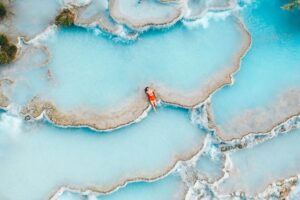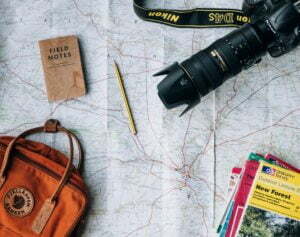Whitewater rafting is a challenging and exciting adventure sport that combines paddling and teamwork to navigate a raft through turbulent whitewater. Rafting trips can last for a few hours or a few days and can be enjoyed by people of all ages and experience levels. Whitewater rafting is an amazing way to explore beautiful and remote areas and is a popular activity for groups and families. Believe it or not, the state of Idaho is actually one of the premier destinations for rafting in the United States, and it is definitely worth a visit for both beginners and long-time enthusiasts. If you want to learn more, read on to find out about the best rivers for rafting in Idaho.
Which rivers are best for whitewater rafting in Idaho?

First, you should know that if you want to go whitewater rafting in Idaho, your best bet is to go with a professional guide or through an established tour company. That way, you can ensure that you are as safe as possible and that you have advice from a trained expert to guide you through your journey. Guided expeditions will often provide you with the opportunity to rent equipment, which can be useful for beginners who may not already own the right gear for rafting. You’ll also be able to see some of the most famous sites in the state.
The most well-known river for rafting in Idaho is the Salmon River. The Salmon River is an iconic Idaho river that offers great whitewater rafting opportunities. The river starts in the Frank Church River of No Return and flows for more than 500 miles to the Snake River. It is one of the longest free-flowing rivers in the lower 48 states and is known for its rapids, gorgeous scenery, and abundant wildlife. The upper section of the Salmon River is especially popular with whitewater rafters, as it features a variety of rapids that are perfect for paddlers.
The Snake River is another one of the best rivers for whitewater rafting in Idaho. It flows through the rugged and beautiful Hells Canyon and offers some of the best whitewater rafting in the country. The river is dam-controlled, so the water level is consistent, and the rapids are challenging. There are several sections of the Snake River that offer different levels of difficulty.
How can you prepare for a whitewater rafting trip?

Now that you know where in Iowa you should go on a whitewater rafting trip, let’s talk about how you should prepare. For example, if you’re planning to travel during the peak season, you will need to practice proper sun safety. You can start by purchasing sunscreen that is labeled as SPF 30 or higher. You should apply sunscreen generously, and reapply every two hours. Wardrobe items like a wide-brimmed hat and sunglasses can protect you from the sun’s rays as well, though you may want to opt for sport glasses so you don’t lose them on your trip.
Everyone knows water is essential in our lives, but it is even more so when you’re participating in a strenuous activity like rafting. Water regulates our body temperature, lubricates our joints, and helps to flush toxins from our system. The general rule of thumb is to drink two to three liters per day, but this can vary depending on your activity level, the climate you are living in, and your body size. If you’re participating in outdoor activities and working out a lot, you will definitely need to drink more water than you ordinarily would.
Idaho is a state with an abundance of rivers, making it an ideal destination for whitewater rafting. With so many options, it can be difficult to decide which river to raft. The Salmon River and the Snake River are the most popular choices and for good reason. They offer scenic views and rapids that are appropriate for people with any level of experience. Before you leave for your trip, you need to be prepared with the equipment you’ll need and learn basic safety skills so you can stay safe. Follow the tips in this article and you’ll be on your way to having an unforgettable rafting experience in Idaho.





